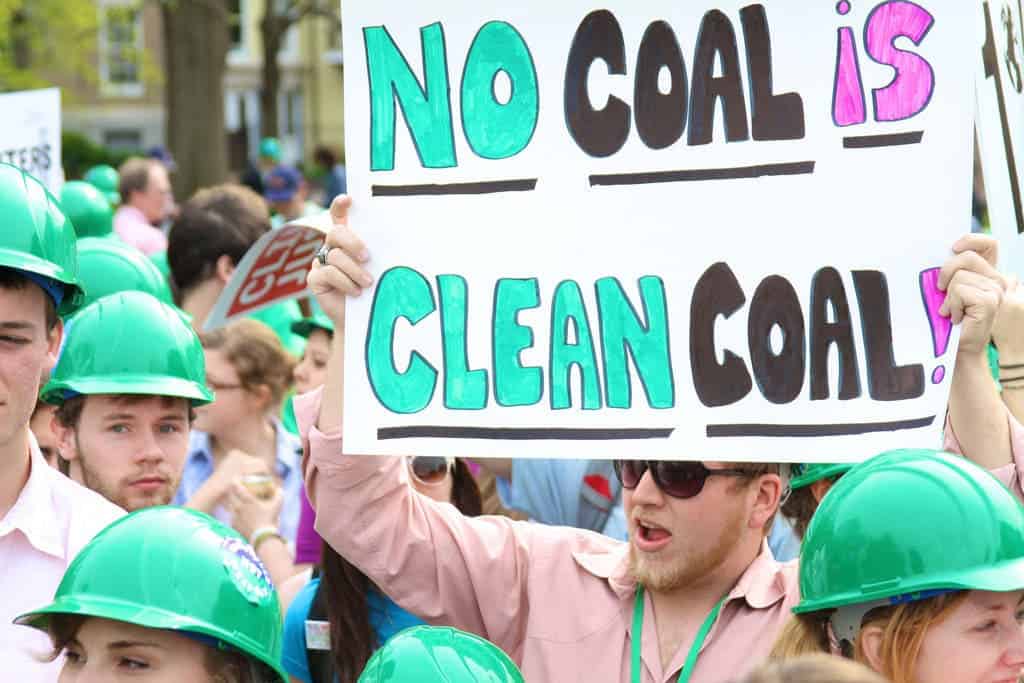Robert Murray, CEO of Murray Energy Corp., the largest coal company in the US, has long tried to convince people that global warming is a hoax. But even he admits that the so-called “clean coal technologies” are a load of nothing — a lie.
Coalers against coal
“Carbon capture and sequestration does not work. It’s a pseudonym for ‘no coal,’” the CEO of Murray Energy, the country’s largest privately held coal-mining company, told E&E News.

Carbon capture and storage (CCS), the proposed technique, involves trapping the carbon from burning coal and then storing it permanently, usually underground. This is a challenging task, both technologically, and financially. In a world where natural gas is often cheaper than coal and where renewables are becoming more and more affordable, coal is struggling to keep up in any form. There’s a lot of concern about the scientific and economic possibility of CCS, even ignoring environmental concerns. So CCS, often referred to as “clean coal,” seems expensive, ineffective, and an overall counterproductive option.
Still, CCS has been touted as a magic solution for the natural fall of the coal industry, which is why it’s so unexpected to see someone like Murray speak against it so bluntly. Murray went on record saying that ‘clean coal’ just doesn’t do anything.
“It is neither practical nor economic, carbon capture and sequestration,” he said last week. “It is just cover for the politicians, both Republicans and Democrats that say, ‘Look what I did for coal,’ knowing all the time that it doesn’t help coal at all.”
The cat is out of the bag, but really, the news here isn’t that clean coal doesn’t do anything — it’s that big execs are admitting it.
Clean coal doesn’t exist

This is not a new type of statement. Environmentalists such as Dan Becker, director of the Sierra Club’s Global Warming and Energy Program, have often claimed that the term “clean coal” is misleading: “There is no such thing as clean coal and there never will be. It’s an oxymoron,” he said. He’s not the only one to hold that view.
“There is no such thing as ‘clean coal,’” Travis Nichols, a spokesman for the environmental giant Greenpeace, told The Huffington Post by email. “It’s a myth used by the industry to get taxpayer money in order to prop up a dying industry. It’s worse than pixie dust and hope, it’s coal dust and nope. Coal miners deserve a just transition, not snake oil and empty promises.”
Even other coal industry CEOs publically admit ‘clean coal’ is all hype. In an interview with ABC, Martin Moore, who is the CEO of CS Energy, one of the biggest energy company Australia, said new generation coal plants use less coal for the same amount of energy and “can have about 25 per cent less emissions”. But even him wasn’t impressed by ultra-super-critical plants.
“It’s not game-changing. You’ve still got to think that ultra-super-critical produces twice the emissions of gas-fired technology,” he said.
The science backs it up. Clean coal is indeed an oxymoron and its technological potential has yet to be demonstrated. CCS consumes a lot of energy (25% more), while producing the same yield. But that isn’t even the difficult part. You have to carry millions and millions of tons of high-pressure CO2, safely store them somewhere, using an infrastructure that doesn’t exist. Again, you have to do all this while competing with natural gas and renewables which are already cheaper than coal. It’s just a big no-no, on all fronts.
So if doesn’t make scientific sense, it doesn’t make economic sense, and even coal people are against it — why does President Trump insist on fighting this losing battle?
“My administration is putting an end to the war on coal,” Trump said. “We’re going to have clean coal, really clean coal.”
We don’t really know for sure, but as it’s been so often the case, the President is lying. “Really clean coal” simply doesn’t exist. Just look at this statement from the Office of Fossil Energy, explaining the state of CCS technology:
“Today’s capture technologies are not cost-effective when considered in the context of storing CO2 from existing power plants. DOE/NETL analyses suggest that today’s commercially available post-combustion capture technologies may increase the cost of electricity for a new pulverized coal plant by up to 80 percent and result in a 20 to 30 percent decrease in efficiency due to parasitic energy requirements. Additionally, many of today’s commercially available post-combustion capture technologies have not been demonstrated at scales large enough for power-plant applications.”
Sure, there are several small CCS experiments scattered across the world, but in the US at least, a working CCS carbon plant just doesn’t exist.
So instead of diverting efforts and resources into a technology that can’t work, why not focus on something that is already working?


